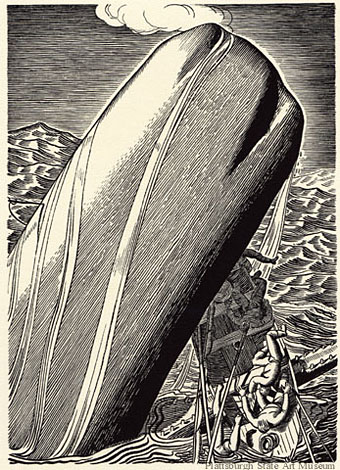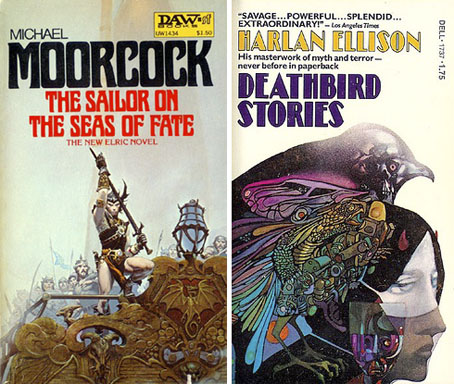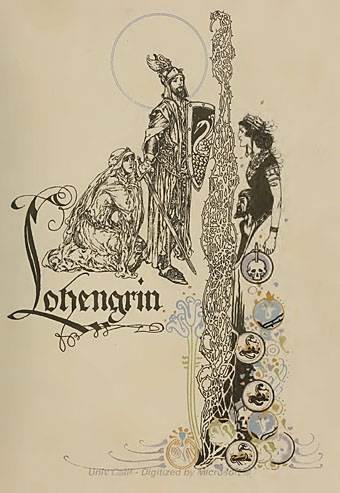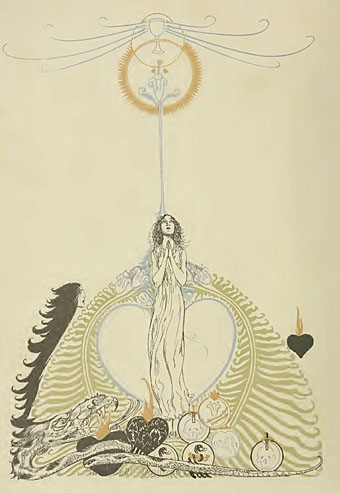Reading Moby Dick at the moment, and thoroughly enjoying it, so I felt the need to look again at Rockwell Kent’s tremendous illustrations. The Rockwell Kent Gallery at the Plattsburgh State Art Museum doesn’t have a complete set of these, unfortunately, but there’s more of them than in the Flickr set I pointed to earlier. The thing to do, of course, is to order an illustrated edition of the book…
Meanwhile, Philip Hoare’s non-fiction account of his whale obsession, Leviathan, or The Whale, is receiving renewed attention now it’s out in paperback. I love this description of a humpback whale “breaching”:
For a split second the animal appeared like some vast and improbable whale-angel against the sky, its huge, gnarled flippers outstretched like wings. Every detail was visible. I saw its great ribbed belly, the rorqual pleats that expand when feeding. I saw the barnacles on its skin, the parasites that hold fast to the animal, making it a travelling colony of its own. Then, as if someone had taken their finger off the pause button, the animal bowed to gravity and fell back into the sea, creating a splash that resounded for miles.
Forgetting that I was surrounded by schoolchildren, I blurted out an inadvertent, “Fuck!” Hardly an erudite response, but I challenge anyone to be indifferent to a close encounter with a whale. I have seen grown men cry at their first sight of a cetacean. They simply exist in another universe; aliens occupying vast oceans of which we have less knowledge than we do of the surface of the moon. To see a whale is a privilege. But it can also become an obsession. This spring, I succeeded in a long-held ambition: to watch right whales from the shore.
Read more of that here.
• More whale art by Ivan Chermayeff and another whale feature at the NYT
Elsewhere on { feuilleton }
• The illustrators archive
Previously on { feuilleton }
• Rockwell Kent’s Moby Dick





